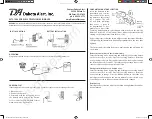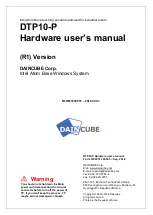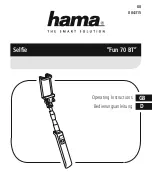
8
english
3.3
Mounting tolerances
To achieve the best possible results, emitter and receiver
must not be offset by more than 1 mm (see Fig. 3-1).
Fig. 3-1:
Parallel offset
Fig. 3-2: Rotation angle
Fig. 3-3: Tilt angle
The maximum permissible angular tolerances as a function
of the emitter-receiver distance are as follows:
Emitter-
receiver
distance
a
1
(emitter
rotated)
a
2
(emitter
tilted)
b
1
(receiver
rotated)
b
2
(receiver
tilted)
Max. 100 mm
±0.5°
±0.5°
±1°
±2°
Max. 500 mm
±0.1°
±0.1°
±1°
±2°
Max. 1000 mm
±0.06°
±0.06°
±1°
±2°
Max. 2000 mm
±0.03°
±0.03°
±1°
±2°
Tab. 3-2: Maximum permissible angular tolerances (applies to all variants)
3.4
Alignment
The emitter and receiver must be so installed that the light
band strikes as close to the center of the receiver window
as possible. In all variants the light band is longer than the
aperture of the receiver. When correctly aligned the light
band therefore overhangs both sides of the receiver window.
Surrounding the receiver window is a white area for a
better visibility of the light band as well as markings for pre-
cise positioning. Align the light band so that the laser line is
centered on the receiver window and another 1 to 2 mm of
the light band can be seen on the left and on the right of
the white screen (see Fig. 3-4 and Fig. 3-5).
Fig. 3-4: Correct alignment
Fig. 3-5: Light band incorrectly aligned (too far to the left; too high)
3
Montage (Fortsetzung)
3
Installation (continued)
Light band edge
Light band edge
BLA Series D
Balluff Light Array
Summary of Contents for IO-Link BLA 100D-001-S115
Page 2: ...www balluff com...
Page 47: ......
















































